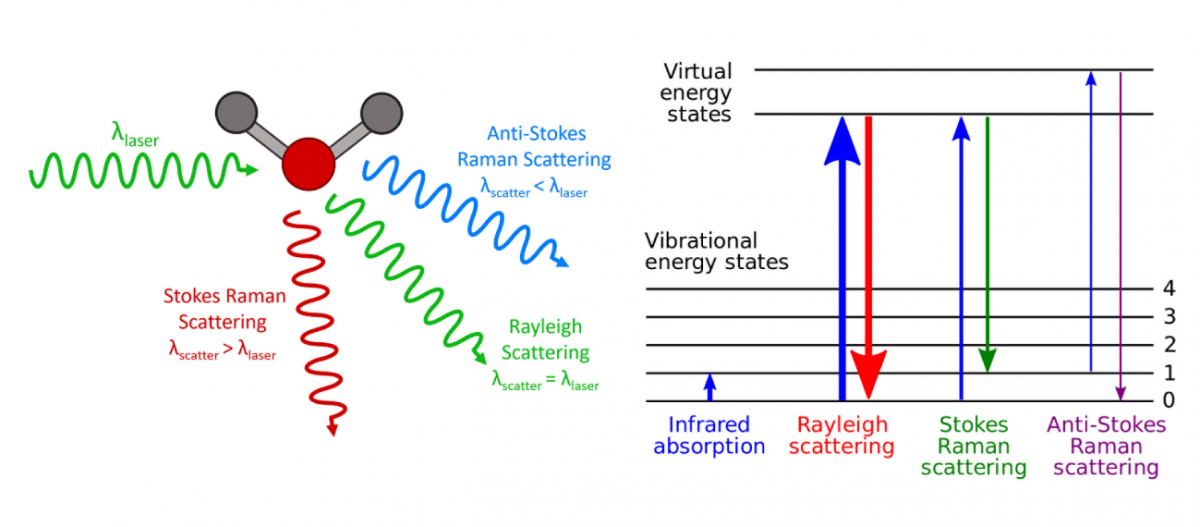Raman spectroscopy and its first steps towards space exploration
When a molecule is irradiated by a monochromatic source, part of the light is scattered at different frequencies. This effect is due to the interaction between light and molecular vibration and, for its discovery, C.V. Raman was awarded the Nobel Prize for Physics in 1930.
Knowing that each molecule vibrates differently, the inelastic scattering (called Raman effect) collected from unknown materials (Raman spectrum) can be used to define their composition. The analytical technique developed for this purpose is called Raman spectroscopy and its application is now extended to different fields of knowledge (medicine, industry, cultural heritage and food science, among others).
In recent decades, the advances made in the miniaturization of Raman systems have further increased the range of applications, finally reaching the field of space exploration. Indeed, thanks to its ability to identify both inorganic (e.g. mineral phases) and organic (e.g. biomarkers) compounds, Raman spectrometers are the ideal tools to study the geology of other planets, as well as to detect the possible presence of life tracers.
Starting from the exploration of Mars, the ESA/ExoMars 2022 rover will be equipped with the Raman Laser Spectrometer (RLS) system, the first Raman instrument in history to be validated for space exploration missions. Besides ExoMars, the payload of the NASA/Mars 2020 rover will include two different Raman systems as parts of Sherloc and SuperCam instrument packages.
These are only the first steps of Raman spectroscopy towards the exploration of our solar system and, we are sure, more and bigger steps will follow in the years to come.

Figure: Visual representation of laser-induced molecular vibration and Raman scattering effect



